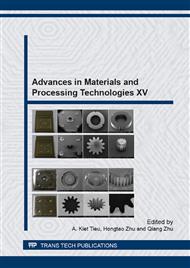p.573
p.590
p.602
p.616
p.626
p.632
p.640
p.646
p.653
Compaction Effect of Granular System with Parameters Changed
Abstract:
In this work, the numerical equation has been established to simulate the vibratory compaction system based on the hysteresis loop of Davidenkov and with the gap ignored between the piston and the materials, and the dynamical characteristics and influence of parameters on the vibration compaction effect were analyzed with different stiffness, damping, amplitude and mass. Two types of experiments were carried out to study the dynamical characteristics and validate the numerical analysis and simulation. The first type of experiments was done with the different exciting vibration amplitude. The second type of experiments was done with the different water saturation instead of the stiffness and damping. The numerical and experimental results show that the equivalent natural frequency and vibration amplitude of the system increased with the stiffness, exciting amplitude increased and damping decreased. The experimental results agree well with results from a theoretical model in general. The research results will be used in intelligent granular compaction in the future.
Info:
Periodical:
Pages:
626-631
Citation:
Online since:
November 2013
Authors:
Keywords:
Price:
Сopyright:
© 2014 Trans Tech Publications Ltd. All Rights Reserved
Share:
Citation:


